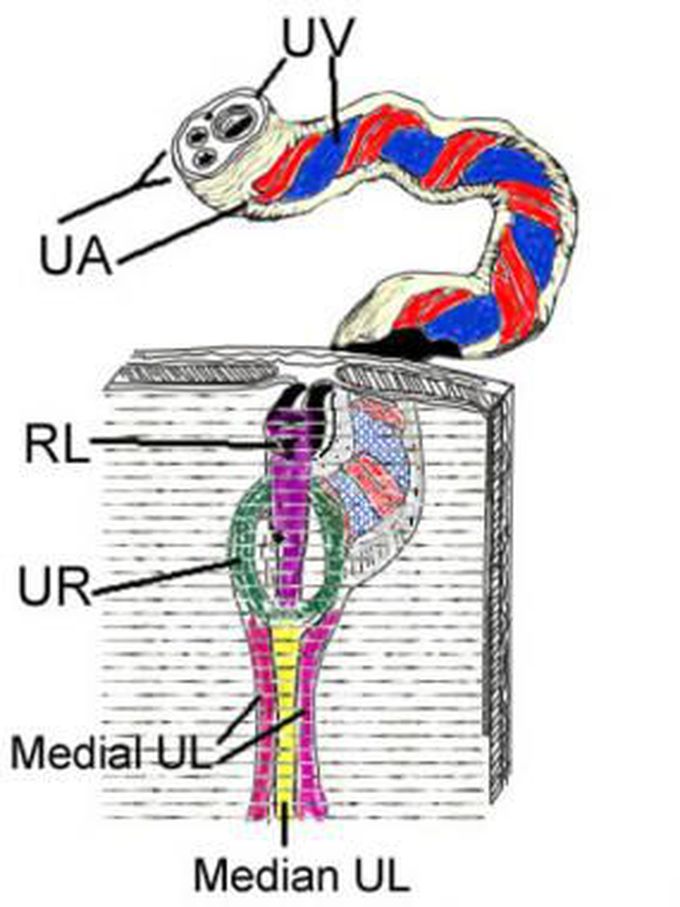


Operative details
Most umbilical procedures can be performed on an elective basis, and surgery should be scheduled when the child is in his or her usual state of health. The exceptions are infants with necrotizing infections and those with stool draining from the umbilicus, indicative of an enteric-umbilical fistula. Mechanical bowel preparation is not needed. Perioperative antibiotics are used for sinuses and fistulas. Antibiotics are not needed for umbilical hernia repairs. General anesthesia is used. The child is placed supine. The abdomen should be widely prepared with antiseptic solution and draped in standard fashion. Omphalomesenteric and urachal remnants can be approached directly through the umbilicus or through an incision in the infraumbilical or supraumbilical crease. Larger children may need additional or larger incisions. Laparoscopy can be performed through the umbilical incision. During exploration of the umbilicus, an attempt is made to identify all anatomic structures (see the image below). A history of infection and resultant inflammation or scar tissue can complicate identification of normal and abnormal structures. Dissection of the umbilicus off the fascia is often useful and can provide access for a small port to perform laparoscopy. The umbilical vein (round ligament), the umbilical arteries (medial umbilical ligaments), and the urachus (median umbilical ligament) can often be identified.

